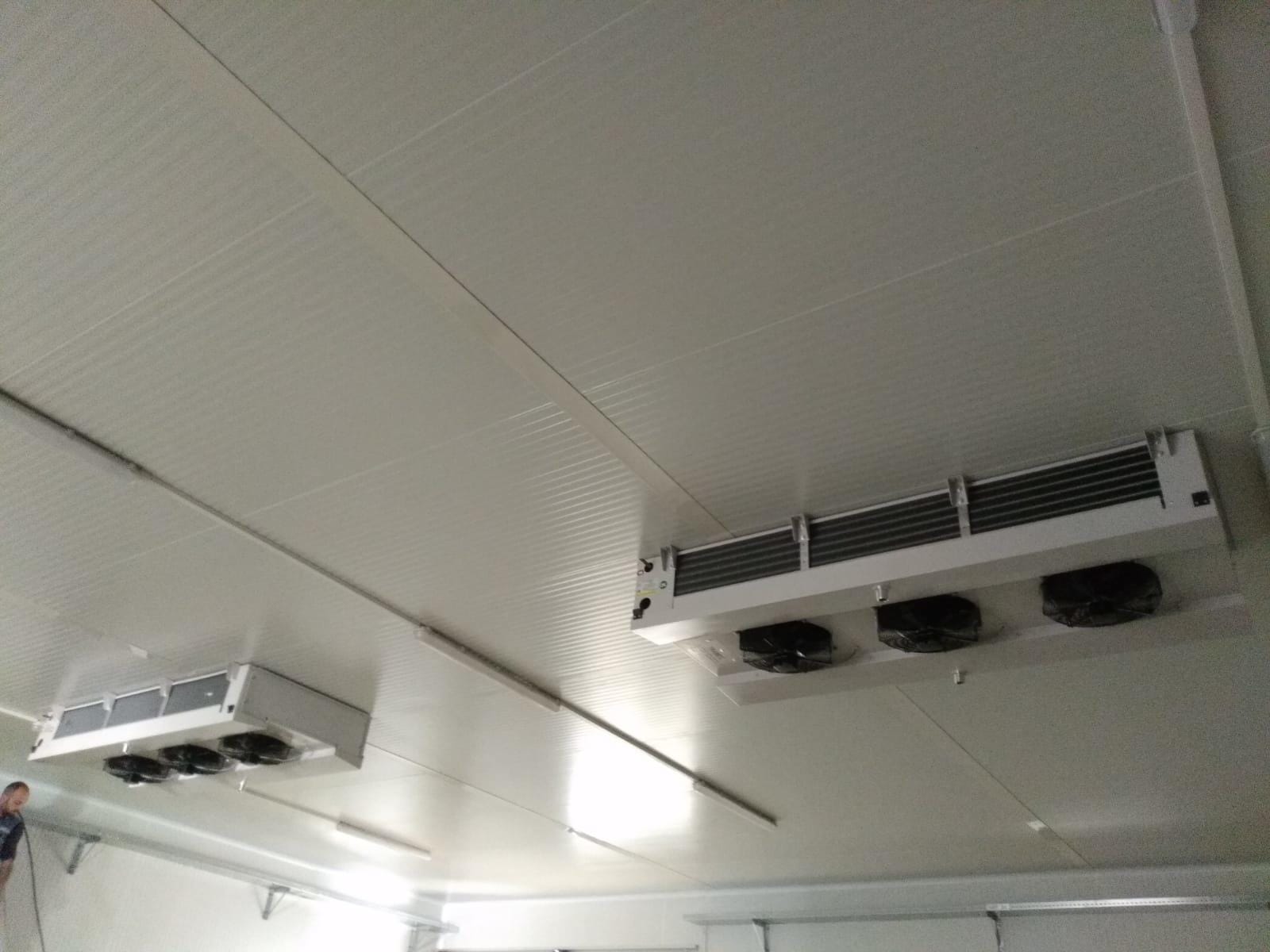The refrigeration evaporator is the name given to any heat exchanger where the refrigerant is evaporated at low temperature and therefore at low pressure, but usually above atmospheric pressure to prevent gas and/or water vapor leakages into the low-pressure circuit. The evaporator is the element of the refrigerating circuit through which heat is absorbed from the environment that is being cooled. It can absorb the heat necessary for refrigerant vaporization either from the air (direct expansion systems), or from a liquid (usually water), or from a solution, which in the case of the meat industry is used as a secondary refrigerant, being circulated through the air cooler inside the refrigerated room.
Only the first mode of operation, direct air cooling through liquid refrigerant vaporization, will be described, as secondary refrigerant plants are installed when it is necessary to accumulate reserves of cold, as in multipurpose refrigerating installations. The direct expansion involves less initial investment and power consumption is generally lower, as temperature differences between the primary refrigerant and air are less than in secondary fluid systems.

Air-cooling Refrigeration evaporators
Can operate under natural convection, where air movement is governed by differences in air density, or under forced or mechanical convection when fans or blowers are employed to expedite air movement over the cooler and to facilitate air distribution inside the cold room.
Natural convection systems have two main advantages: no energy is needed for air circulation and the desiccation of the produce is much less because air velocities are much lower and relative humidity is high. There are obviously some drawbacks, first, in their defrosting and, second, and more importantly, in their low overall heat exchange coefficient owing to low air velocities over the evaporator that lead to large exchange surface areas, making them bulky and very expensive. Their cost, including installation in the cold chamber, is from three to four times that of a forced convection evaporator because the exchange surface is larger, the tube manufacturing cost is high and erection in the chamber is difficult and time-consuming.
Natural convection grids can be uniformly distributed under the ceiling, leaving enough space for good air circulation (never less than 8 cm), and also along the chamber walls if there is not enough headspace. Factory-built coil-and-baffle assemblies facilitate installation and can be used for almost any natural convection application.
Forced convection or forced draught evaporators have been developed because the higher overall heat transfer coefficient achieved by rapid air circulation over the coils permits a drastic reduction in evaporator surface areas. Further, they have a great refrigerating capacity.
Air velocities through the evaporator must be in the range of 1.5 to 3 m/s to achieve a high heat-transfer coefficient, but it should be borne in mind that above the upper limit (3 m/s) the heat created by the electric fan motor will surpass the increase in cooling capacity. Also, velocities above 3 m/s will tend to carry moisture deposited on the coils toward the produce. The throw draught must be sufficiently far-reaching to achieve uniform air circulation and even temperature distribution in the cold store.
Refrigeration Evaporator
coils are finned tubes built to produce a large heat exchange area in a compact element. Good thermal contact between the tube and the fins must be assured (soldering, biting into the tube surface by tube expansion, securing by straightening fin flares). Fin size and spacing depend on the operation and fundamentally on the operating temperature.
Fin height should usually be equal to the diameter of the tube and the fin should be thick enough to provide mechanical resistance (0.7-1 mm). Fin spacing is between 6 and 10 mm or more for cold rooms or 15 mm or more for freezer rooms, to minimize the risk of an ice block. Sometimes fins are spaced wider at the coil air inlet to act as a frost catcher to avoid obstruction of the airflow.

